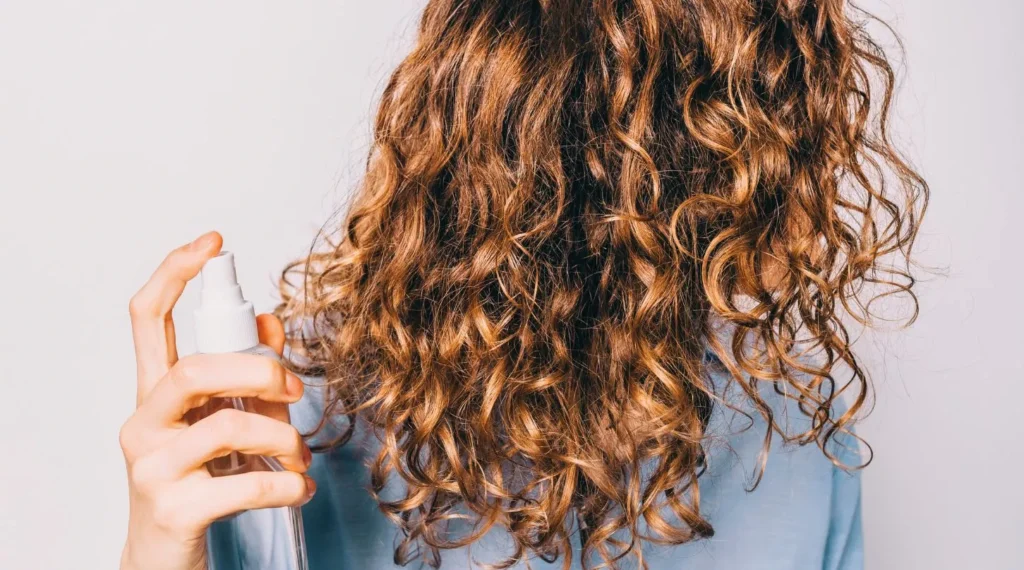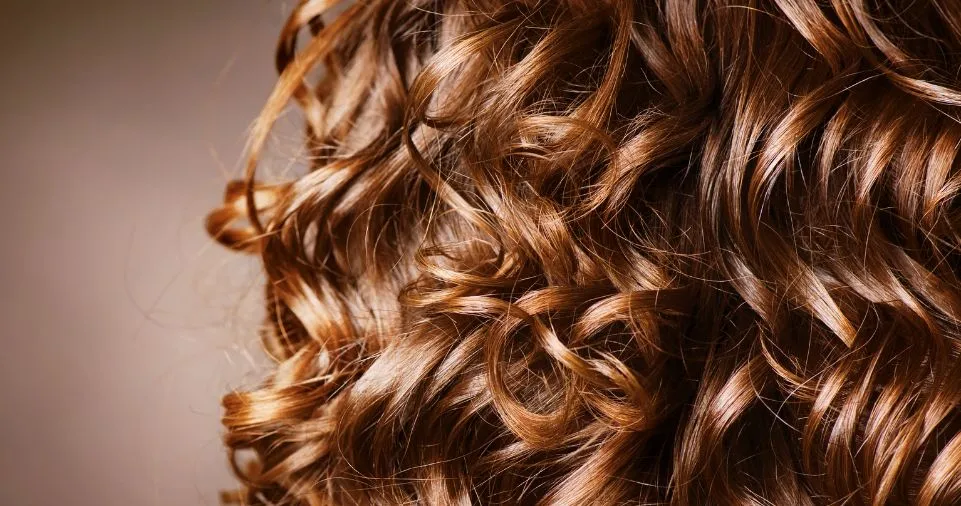Have you ever pondered over the intriguing transformation of your straight locks into luscious curls when exposed to water? The science behind this phenomenon is more fascinating than you might think.
Table of contents
- The Role of Hydrogen Bonds
- The Science Behind Hair Texture
- The Properties of Water and Hair
- The Role of Hydrogen Bonds in Hair Texture
- How Humidity Affects Hair Texture
- Why Some People Have Curly Hair While Others Do Not?
- The Science Behind Curly Hair
- The Genetic Component of Hair Texture
- The Influence of Hormones on Hair Texture
- The Impact of Hair Products on Texture
- Conclusion
Let’s delve into the intricacies of why hair becomes curly when wet and explore the various factors contributing to this captivating transformation.
The Role of Hydrogen Bonds
The fundamental explanation lies in the disruption of hydrogen bonds. Your hair, primarily composed of proteins known as keratin, forms long chains held together by these hydrogen bonds. When exposed to water, these bonds break, allowing the individual keratin chains to move freely. As they move, your hair naturally curls up, presenting the classic ‘wet hair look.’ This process is universal, although its extent varies based on your hair’s inherent characteristics.
The Science Behind Hair Texture
Understanding why some people have straight hair while others boast a cascade of curls involves delving into genetics, hair follicle shapes, and environmental influences like humidity. The key player here is the type of keratin molecules, alpha-keratin and beta-keratin, present in your hair. Alpha-keratin, found in mammals like humans, forms coiled coils, enhancing hair elasticity. Beta-keratin, present in reptiles and birds, forms more rigid, interlocking structures.
When wet, alpha-keratin absorbs water, leading to increased elasticity, causing straight hair to become wavy or curly. The degree of curling or waving depends on the shape and number of alpha-keratin coiled coils within each hair strand. It’s a captivating dance between genetics and environmental factors influencing the texture of your hair.
The Properties of Water and Hair
Water plays a pivotal role in shaping your hair’s texture. The properties of water, such as hydrogen bonds, absorption, and surface tension, interact with the proteins in your hair, creating the mesmerizing curls when wet. Understanding these properties provides insight into the temporary transformation your hair undergoes after a shower.

Hydrogen bonds temporarily break, allowing hair to bend and curl when wet. Absorption enables water to enter the hair, breaking hydrogen bonds and contributing to curling. Surface tension causes water to form droplets on hair, potentially resulting in frizz or unevenness.
Moreover, the shape of the hair cuticle also influences wet hair curling. As the cuticle swells and lifts when absorbing water, it becomes easier for the hair to curl.
The Role of Hydrogen Bonds in Hair Texture
Hydrogen bonds emerge as the key player in understanding why hair gets curly when wet. These weak chemical bonds form between water molecules and hair strands. When dry, these bonds keep hair straight; however, when wet, water molecules break these bonds, rendering the hair more pliable. As the hair dries, new hydrogen bonds form, albeit not always in the same pattern, resulting in a different shape and the emergence of curls or waves.
Research into hydrogen bonds’ role in hair texture has led to the development of various products leveraging this knowledge. From perms for permanent curls to blowouts for temporary changes and hair relaxers for straightening, these products manipulate hydrogen bonds, offering diverse styling options.
How Humidity Affects Hair Texture
Humidity becomes a significant player in the ongoing saga of hair texture. Hair, primarily composed of the protein keratin, reacts to moisture in the air. In high humidity, hair absorbs moisture, leading to frizz and unruly strands. Conversely, in low humidity, hair loses moisture, resulting in dry, brittle, and lackluster strands.

Hair types also influence how humidity affects them. Curly hair tends to become frizzy in humid conditions, while straight hair is more prone to static and flyaways in dry conditions. Managing humidity-induced changes involves using anti-frizz products and adopting hairstyles that can withstand varying moisture levels.
Why Some People Have Curly Hair While Others Do Not?
The genetic component emerges as a prominent factor determining whether one is blessed with curls or graced with straight strands. Curly hair is often an inherited trait, influenced by genetics, ethnicity, and hormonal fluctuations. Understanding the interplay of these factors sheds light on the diversity of hair textures among individuals.
Genetics plays a pivotal role, with curly hair often running in families. Ethnicity contributes to different hair types, such as curlier hair in people of African descent compared to those of Asian descent. Hormones can also affect hair follicles, leading to changes in texture, as evidenced by some women experiencing curly hair during pregnancy.
It’s crucial to note that curly hair, while beautiful, comes with its challenges, including frizz and dryness. Proper care involves using products tailored for curly hair, avoiding excessive heat styling, and embracing one’s natural texture.
The Science Behind Curly Hair
Understanding why hair takes on a curly form involves delving into the shape of the hair follicle. The three main hair follicle shapes – straight, oval, and rounded – determine the texture and curl pattern of the hair. Straight hair follicles result in sleek, straight hair, while rounded follicles lead to tightly coiled or curly locks.
Curly hair’s higher number of rounded hair follicles contrasts with straight hair’s prevalence of straight follicles. Additionally, the hair cuticle’s shape and the amount of oil produced by the scalp contribute to the drier nature of curly hair compared to straight hair.
Appreciating the intricate science behind curly hair allows for better care and maintenance, enhancing the beauty of this unique trait.
The Genetic Component of Hair Texture
Curly hair’s origins lie in genetics, determining an individual’s hair texture and curl pattern. The shape of the hair follicle, inherited from parents, influences how hair grows and the patterns it adopts. Specific genes, such as KRT81 and trichohyalin, contribute to curly hair by influencing the structure and shape of the hair shaft.
Understanding the genetic component of hair texture sheds light on the diverse range of hair types observed among individuals. While some inherit straight hair, others are bestowed with waves, curls, or tight coils, creating a rich tapestry of hair textures.
The Influence of Hormones on Hair Texture
Hormones wield a considerable influence over various physiological processes, including hair growth and texture. Fluctuations in hormone levels, such as those occurring during puberty, pregnancy, and menopause, can lead to changes in hair texture. This hormonal dance affects the activity of hair follicles, influencing whether hair grows straight, wavy, or curly.
During puberty, for example, an increase in androgen hormones can contribute to the development of curlier hair. Pregnancy, with its hormonal shifts, is also known to alter hair texture, with some women experiencing temporary changes in curl pattern. Understanding the hormonal dynamics involved in hair texture provides insights into the diverse ways hair can transform throughout one’s life.
The Impact of Hair Products on Texture
The quest for the perfect hair often involves a myriad of hair care products promising to transform texture and appearance. Shampoos, conditioners, styling gels, and serums flood the market, each claiming to address specific hair concerns. Understanding the impact of these products on hair texture involves scrutinizing their ingredients and how they interact with the hair shaft.
Shampoos and Conditioners
The choice of shampoo and conditioner can significantly impact hair texture. Moisturizing shampoos and conditioners can hydrate the hair, reducing frizz and enhancing smoothness. Conversely, products with harsh chemicals may strip the hair of its natural oils, leading to dryness and a coarser texture.
Styling Products
Gels, mousses, and serums are commonly used to style and shape hair. These products often contain polymers and other ingredients that coat the hair shaft, providing hold and definition. However, excessive use or product buildup can weigh down the hair and affect its natural texture.
Heat Styling
The use of heat styling tools, such as flat irons and curling wands, is a common practice for altering hair texture. The application of heat can temporarily break and reshape the hydrogen bonds in the hair, leading to straightening or curling. However, frequent use of high heat can also damage the hair cuticle, resulting in long-term changes to texture.
Keratin Treatments
Keratin treatments, popular for achieving smoother and straighter hair, involve the application of a keratin-infused formula that temporarily alters the hair’s structure. The treatment can reduce frizz and enhance manageability, but its effects gradually fade with washing.
It’s essential to approach the use of hair products with awareness and choose formulations that align with your hair type and goals. Additionally, maintaining a balance and avoiding excessive use of styling tools can contribute to long-term hair health.
Conclusion
The intricate dance between genetics, environmental factors, and hair care practices determines the texture of your hair. Whether you embrace your natural curls, experiment with different styles, or opt for chemical treatments, understanding the science behind hair texture empowers you to make informed choices for healthy and beautiful locks.
From the role of hydrogen bonds in wet hair curling to the genetic factors shaping your natural texture, each aspect contributes to the unique and diverse world of hair. Embrace the beauty of your individual hair journey, and remember that the science behind your locks is as fascinating and complex as the strands themselves.







